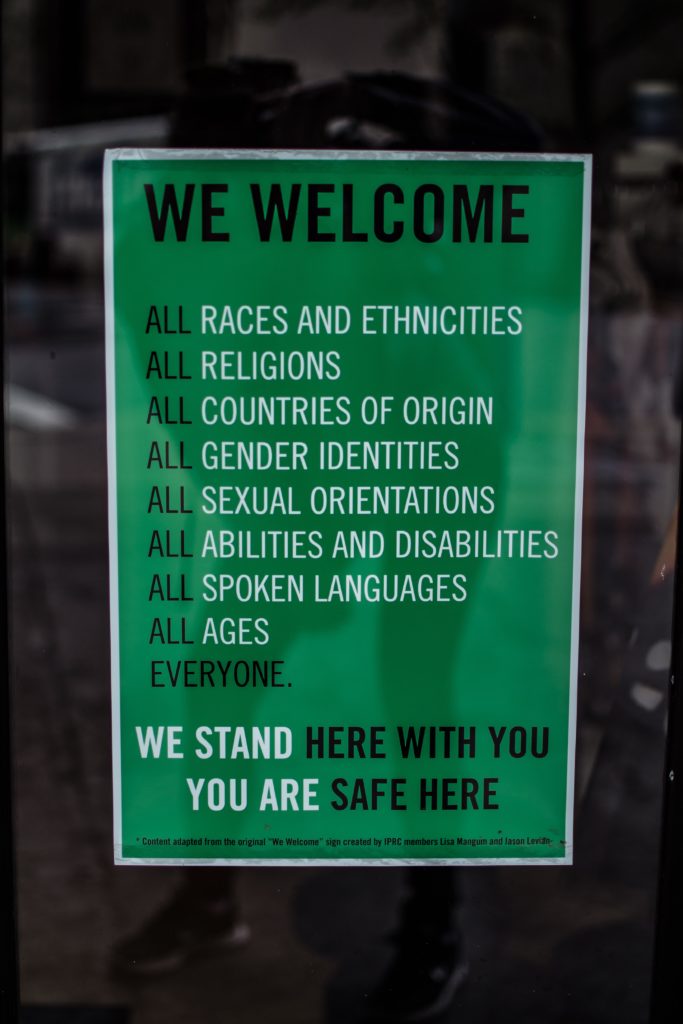Diversity & Inclusion: how do you make sure your IC strategy is for everyone?

In an age where countless groups of people struggle to be represented across all industries of the world, companies that lack a diversity & inclusion strategy are looking less and less appealing.
Diversity & Inclusion are critical for success
Diversity is a topic that is making waves in all industries, from big screen projects that star historically underrepresented culturesto celebrities refusing to partner with brands that don’t have culturally diverse teams.
Equal representation is a major player in 2019 and companies are finally beginning to grasp just how vital diversity & inclusion is.
When it comes to success, a strong IC strategy is crucial to representing and motivating employees to work toward company goals. However, the ability to connect and engage your staff depends largely on your ability to represent them. Without a diversity & inclusion strategy, companies risk losing business and new talent to more diverse organizations that prioritize these initiatives.
There is no basic formula to diversity as different places and cultures have wide-ranging definitions of what diversity & inclusion even mean.
Diversity in the workplace entails understanding, accepting, and respecting differences between people. This can be based on physical appearance, cultural, medical or educational background, and more including :
- different races, ethnicities or cultures
- genders, ages, sexual orientations
- religions and beliefs
- physical or mental disabilities
- differences in education, skill sets, and experiences
Tied closely to diversity, inclusion takes the process a bit farther with an aim to create a respectful and collaborative environment that all employees, no matter the differences, can partake in.

While most business leaders now believe taking advantage of these differences is what leads to innovation, they don’t always know how to reach that goal.
Why has diversity & inclusion become so important?
Change is the catalyst. Not only does change in the workforce demographics play a significant role but outlook and temperament of the world have contributed to this shift in priorities.
If you’ve kept up with any current events, you are aware that the current global political climate is best described as sensitive. Feelings of fear and separation have risen among debates of immigration challenges, nationalism, and gender equality. With reports such as this frequenting the press, it’s no wonder that employees have a heightened sensitivity to diversity and inclusion.
Your employees are consistently given reasons to be concerned based on what they read or hear and are looking to their employers for a different and positive take. Now organizations are expected to touch on and take a stance against issues of equality, fairness, and even social rights.
The pressure is even higher for those organizations that are considered global entities. The difference in time zones isn’t the only obstacle to employee engagement. Differences in religion, culture, and language have increased the likelihood of misunderstandings and unconscious bias.
Workforces are demanding more transparency, more collaboration, and most of all an environment that breeds equal opportunities for success.
Research from McKinsey shows that greater diversity in the workforce results in greater profitability and value creation. This knowledge should act as an incentive for organizations to start building a strong culture of inclusion and flexibility.
Organizations need both a diverse workforce and an inclusive workplace culture to realize the full benefits of diversity & inclusion. Here are a few techniques to make sure that your IC strategy is for everyone.
Free ebook – 14 steps to great internal communication
Improve minority hiring
Aim for proper representation of your workforce from the start. This means that it’s time to take a look at your recruiting, hiring and onboarding processes. The workforce demographic has changed. Now, the generations that are running the show in current workforces are not only tech-savvy and innovative; they are also socially and culturally conscious. Unfair perceptions and biased stereotypes limit individuals with unique backgrounds, experiences, and talents.
Unfortunately, minorities still represent a relatively small percentage of people in the workforce, especially in high ranking roles and senior level positions.
Statistics place women’s labor force participation rate at 48.5%,much lower than the men’s rate at 75.0%. Data also shows that, across all age groups, the employment-population ratios were much lower for persons with a disability than for those with no disability.
In recent years, recruiting decisions have increased the incoming talent pool of women, minorities, and persons with disabilities. However, companies struggle to generate a workplace culture that can retain and eventually advance them.

Take the necessary steps to ensure equal access and participation in the workplace. To foster trust with certain demographic groups., invest in diversity recruitment programs. Maybe even have them run by some of your most diverse staff. They will be able to speak to and for some of their more specific needs.
Consider implementing programs that allow or blind interviews and resumes. Make an effort to begin removing bias from the equation altogether by incorporating unprejudiced software.
Leadership and accountability
Diversity & inclusion are often treated as a joint initiative maintained exclusively by HR. Regardless of tradition, leaving it to the responsibility of one department removes the element of responsibility from all others who have a stake in the outcome.
Think of diversity & inclusion as another necessary piece of any organization, much like security and compliance. To succeed, all leaders must have a hand in the making and maintenance of these protocols. As such, tackling bias needs to begin from the top down
issues surrounding diversity & inclusion are challenges that leaders have a duty to address.

Hold your leaders accountable for inclusive behavior. People today are slowly becoming aware of both unconscious and explicit bias – without executives to lead the charge toward a more inclusive culture, the reputation of the entire organization can be at stake.
Thirty-eight percent of executives report that the primary sponsor of the company’s diversity and inclusion efforts is the CEO. Leaders should pursue changes in processes and systems that expand the definition of diversity and encourage a variety of persons and thought.
Begin by listening to your staff. Learning and making people aware that instances of bias are unacceptable can help determine the climate of the entire workforce. Consider immersing leaders in their workplaces to give them a full understanding of how bias affects hiring, collaboration, and overall business outcomes. This empathy will allow leaders to lead by example and ultimately improve the employee experience for every employee.
Work-life balance and flexibility
Work-life balance, family time, and individual benefits are all considered part of the total employee experience. However, minorities often get the short end of the stick as their life circumstances often differ from their colleagues. Conflicts, personal requirements and more act to limit these individuals and distance them from their peers and organization. Without taking into account all their additional needs, it becomes unfair and almost negligent.

Flexibility is necessary to entice, support and retain minority talents. Employees that struggle with work-family or work-personal conflicts are plenty. However, these issues are experienced more heavily by underrepresented demographics like women or those with disabilities. Women are still the primary group tasked as the caregiver. Responsibilities like parental duties or caring for a loved one make it hard to maintain long-term employment. The same can be said for those with disabilities as their medical and care needs often take precedence.
To assist with balancing work with family or medical affairs, provide employees with the flexibility to manage their responsibilities. Benefits such as work from home days and flexible hours can work to make employees feel like a valued member of the team. Create a transparent work process that addresses the problems they may face while making it clear that their needs are recognized as important.
The old understanding of diversity & inclusion is changing. With related issues happening globally, this movement toward a more inclusive and accepting culture will continue to accelerate. Internal communication is playing a more prominent role than ever in connecting and uniting people behind a common objective. The workforce of today looks and works differently, and they require tools that can set them up for long-term success. Organizations must welcome the shift and find their footing in the new age or risk falling behind their competitors.

